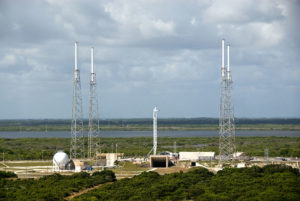Elon Musk shares some surprising details about the materials used to create the massive new rocket.
SpaceX managed the record-breaking 21 launches in 2018, but it has also currently been working on some bigger plans for the future. In the early morning of Christmas Eve, Musk released on Twitter a photo of prototype of his spacecraft, now known as Starship, and previously as Big Falcon Rocket. This is the ship that SpaceX plans to use to send people to the moon, to Mars and on other super-fast international flights to space.

SpaceX has said the spacecraft, being built at the SpaceX test facility in Texas, will be bigger and considerably more powerful than the Saturn V that took Apollo astronauts to the moon. The nose cone is multiple stories tall. Musk tweeted that the massive rocket prototype has a stainless steel skin and its steel will perform better than lighter weight carbon fiber material at high temperatures.
The rocket will be roughly 30 feet wide and 180 feet tall, and will be able to land and re-launch on a remote planet. This spacecraft will make the first planned voyage to Mars as well as the trip around the moon with a group of six to nine artists in a project called Dear Moon by 2023.
The prototype is also being constructed at the company’s launch facility in Boca Chica, Texas, a location that Musk said a few months ago would be dedicated to its interplanetary spacecraft. Some parts of it are still being built at the Port of Los Angeles in San Pedro.
The “test hopper” will be a version of the Starship but not full size. “The test hopper is with diameter of 9 meters / 30 feet, just not full height. Super Heavy will be full height and diameter,” Musk tweeted, noting that his company will go directly for a full-scale version of the rocket booster, rather than a truncated test version.
When the giant rocket lifts off from Earth it will have a rocket booster, known as Super Heavy, that will be roughly 219 feet tall with 31 raptor engines, a massive one the world has never seen.
Musk has said SpaceX plans to begin testing its Starship spacecrafts in 2019 with “hopper flights” that will launch the rocket straight up and bring it back down for a landing. The test flights will use three of the company’s next generation Raptor engines.
According to CNET.
